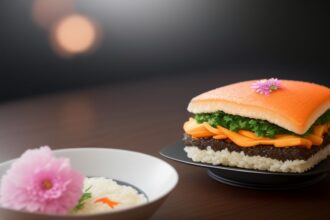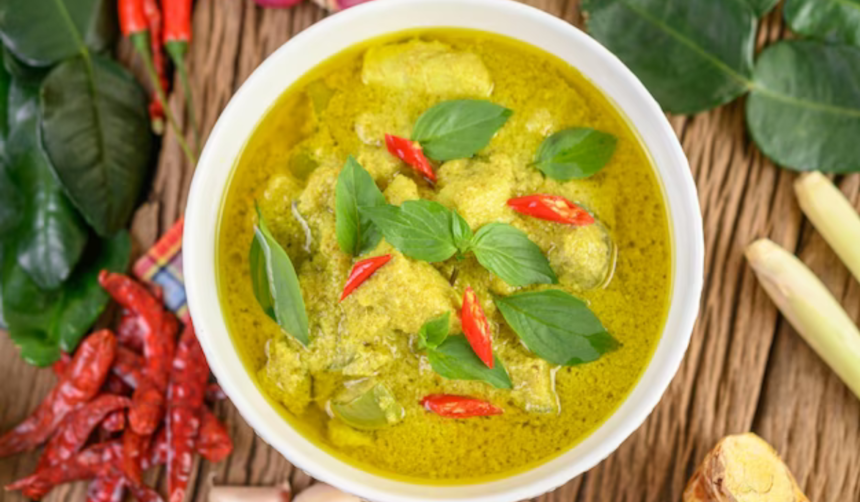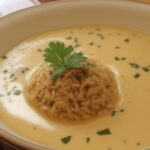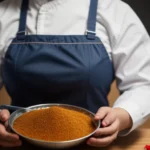Thailand is renowned for its vibrant culture, stunning landscapes, and, of course, its mouthwatering cuisine. From the bustling street food stalls of Bangkok to the upscale restaurants of Phuket, Thai cuisine offers a diverse range of flavors and ingredients that are sure to tantalize your taste buds. In this article, we will take you on a gastronomic journey through some of the most popular and iconic dishes in Thai cuisine, showcasing the rich diversity and depth of flavors that this culinary tradition has to offer.
The History of Thai Cuisine
Thai cuisine is a reflection of the country’s long and complex history, which has been influenced by a variety of cultures and culinary traditions. The earliest known evidence of Thai cooking dates back to the Sukhothai period of the 13th century, when the use of spices and herbs was introduced to the region by Chinese and Indian traders. Over the centuries, Thai cuisine has evolved and adapted, drawing inspiration from neighboring countries such as Laos, Cambodia, and Malaysia, as well as from European colonizers.
Introduction to Thai Ingredients
One of the key features of Thai cuisine is its use of fresh and aromatic ingredients, which give the dishes their distinctive flavor and fragrance. Some of the most common ingredients in Thai cuisine include lemongrass, kaffir lime leaves, galangal, coconut milk, and Thai basil. These ingredients are used in a variety of ways, from curries and stir-fries to soups and salads, creating a harmonious blend of flavors that is both bold and complex.
Exploring the Different Regional Cuisines
Thailand is divided into four main regions, each of which has its own unique culinary traditions and specialties. In the north, the cuisine is characterized by its use of herbs and spices, as well as its strong influences from the neighboring countries of Laos and Myanmar. Northern dishes are often rich and hearty, with a focus on grilled meats, sticky rice, and spicy dipping sauces.
In the northeastern region of Isaan, the cuisine is known for its bold and fiery flavors, with dishes featuring a generous amount of chilies, garlic, and herbs. Isaan cuisine is also known for its use of fermented ingredients, such as fish sauce and shrimp paste, which add a distinct umami flavor to the dishes.
The central region of Thailand, which includes Bangkok, is home to some of the country’s most iconic dishes, such as Pad Thai, Tom Yum Goong, and Green Curry. Central Thai cuisine is characterized by its balance of sweet, sour, salty, and spicy flavors, as well as its use of fresh herbs and vegetables.
In the southern region of Thailand, the cuisine is influenced by the region’s proximity to the sea, with an emphasis on seafood, coconut milk, and tropical fruits. Southern dishes are often rich and creamy, with a strong focus on curries and coconut-based soups.
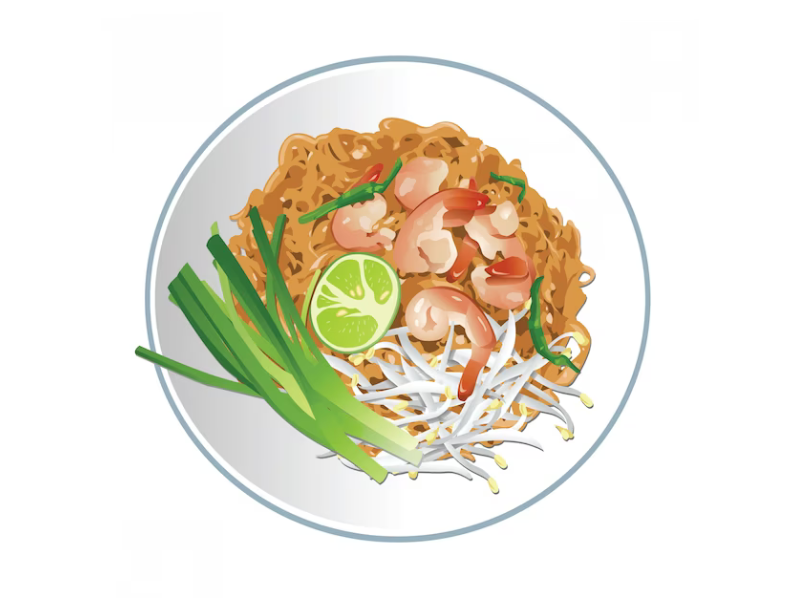
Iconic Thai Dishes: Pad Thai
No discussion of Thai cuisine would be complete without mentioning Pad Thai, one of the country’s most iconic and beloved dishes. This stir-fried noodle dish is made with rice noodles, tofu, shrimp, bean sprouts, and peanuts, tossed in a sweet and tangy sauce made from tamarind, fish sauce, and sugar. Pad Thai is typically garnished with a wedge of lime, fresh cilantro, and a sprinkle of chili flakes, adding a burst of flavor and texture to the dish.
Iconic Thai Dishes: Green Curry
Another classic Thai dish that has earned worldwide acclaim is Green Curry, a fragrant and spicy curry made with a paste of green chilies, lemongrass, galangal, and kaffir lime leaves, cooked with coconut milk, vegetables, and choice of protein (such as chicken, beef, or tofu). Green Curry is typically served with steamed jasmine rice, allowing the rich and creamy sauce to soak into the fluffy grains, creating a symphony of flavors in every bite.
Must-Try Street Food in Thailand
One of the best ways to experience the vibrant and diverse flavors of Thai cuisine is by sampling the street food that can be found in every corner of the country. From the sizzling skewers of grilled meat at a night market to the fragrant bowls of noodle soup at a roadside stall, Thai street food offers a tantalizing array of flavors and textures that are sure to delight your taste buds.
Authentic Thai Cooking Techniques
Thai cooking is characterized by its use of fresh ingredients, bold flavors, and intricate techniques that are designed to bring out the best in each dish. Some of the key cooking techniques used in Thai cuisine include stir-frying, steaming, grilling, and simmering, as well as pounding and grinding fresh herbs and spices to release their aromatic oils and flavors. By mastering these techniques, Thai chefs are able to create dishes that are not only delicious but also visually stunning, with a perfect balance of flavors and textures.
Popular Thai Desserts and Snacks
No meal in Thailand would be complete without indulging in some of the country’s decadent desserts and snacks, which are known for their delicate balance of sweet and savory flavors. Some of the most popular Thai desserts include Mango Sticky Rice, a simple yet satisfying dish made with ripe mangoes, coconut milk, and sticky rice, as well as Thai Coconut Ice Cream, a creamy and refreshing treat that is perfect for cooling down on a hot day.
The Influence of Thai Cuisine on International Cuisine
Thai cuisine has had a profound influence on international cuisine, with many of its dishes and flavors being embraced and adapted by chefs around the world. In countries such as the United States, Europe, and Australia, Thai restaurants are a staple of the culinary scene, offering a taste of Thailand’s vibrant and diverse flavors to diners of all backgrounds. Some of the most popular Thai dishes that have been adopted by international palates include Pad Thai, Tom Yum Goong, and Red Curry, as well as a variety of street food favorites such as Chicken Satay and Som Tum.
Tips for Cooking Thai Cuisine at Home
If you’re inspired to try your hand at cooking Thai cuisine at home, there are a few tips and tricks that can help you achieve authentic and delicious results. First and foremost, be sure to use fresh and high-quality ingredients, such as herbs, spices, and vegetables, to ensure that your dishes have the vibrant and bold flavors that Thai cuisine is known for. Additionally, take the time to pound and grind fresh herbs and spices by hand, as this will help release their aromatic oils and create a more intense and complex flavor profile in your dishes.
To enhance the flavor of your dishes, consider using a variety of seasonings and condiments, such as fish sauce, shrimp paste, and chili paste, which can add depth and complexity to your dishes. Finally, don’t be afraid to experiment with different combinations of ingredients and flavors, as Thai cuisine is all about creativity and exploration. By following these tips and techniques, you can create delicious and authentic Thai dishes that are sure to impress your friends and family.
In conclusion,
Thai cuisine is a rich and diverse culinary tradition that offers a wide range of flavors, ingredients, and cooking techniques that are sure to delight any food lover. From the fiery dishes of Isaan to the creamy curries of the south, Thai cuisine is a celebration of bold flavors, fresh ingredients, and intricate techniques that have captivated diners around the world. So the next time you’re craving something delicious and exotic, why not take a culinary journey through the diverse and flavorful world of Thai cuisine? You won’t be disappointed.
FAQs about “From Pad Thai to Green Curry: Exploring the Diversity of Thai Cuisine”
- What makes “From Pad Thai to Green Curry: Exploring the Diversity of Thai Cuisine” a compelling exploration of Thai food? “From Pad Thai to Green Curry” offers an immersive journey through the diverse and vibrant world of Thai cuisine. It celebrates the breadth of flavors, ingredients, and culinary techniques that define Thai cooking, providing readers with a comprehensive understanding of this beloved cuisine.
- Which aspects of Thai cuisine are covered in this book? This book covers a wide range of aspects of Thai cuisine, including popular dishes like pad Thai and green curry, as well as lesser-known regional specialties and street foods. It also explores the cultural significance, ingredients, and cooking methods that make Thai cuisine unique.
- Are the recipes in “From Pad Thai to Green Curry” suitable for home cooks of all skill levels? Yes, “From Pad Thai to Green Curry” caters to cooks of all skill levels, with recipes that range from simple and beginner-friendly to more complex and adventurous. Whether you’re new to Thai cooking or an experienced chef, you’ll find recipes that are accessible and easy to follow.
- How does this book showcase the diversity of Thai cuisine? This book celebrates the diversity of Thai cuisine by highlighting dishes from different regions of Thailand, each with its own unique flavors and ingredients. From the spicy and aromatic dishes of the South to the fragrant and delicate flavors of the North, readers will discover the rich tapestry of Thai culinary heritage.
- Can readers expect to learn about the cultural and historical background of Thai cuisine in this book? Absolutely! “From Pad Thai to Green Curry” delves into the cultural and historical background of Thai cuisine, exploring its origins, influences, and evolution over time. Readers will gain insights into the role of food in Thai culture and society, as well as the traditions and customs associated with Thai culinary heritage.
Advantages:
- Diversity: The title suggests a comprehensive exploration of Thai cuisine, covering a range of dishes from Pad Thai to Green Curry, showcasing the breadth and depth of flavors within Thai cooking.
- Culinary education: Readers can anticipate learning about the cultural significance, ingredients, and cooking techniques behind popular Thai dishes, deepening their understanding of Thai culinary traditions.
- Gastronomic adventure: The title promises readers an exciting culinary journey through Thai cuisine, offering them an opportunity to explore a variety of flavors, textures, and regional specialties.
- Practicality: By highlighting well-known dishes like Pad Thai and Green Curry, the title makes the content accessible to readers who may be new to Thai cuisine or looking for familiar dishes to try.
- Inspiration for cooking: The title may inspire readers to try cooking Thai dishes at home, providing them with recipes, tips, and techniques to recreate the flavors of Thailand in their own kitchens.
Disadvantages:
- Lack of specificity: While Pad Thai and Green Curry are mentioned, the title does not specify which other dishes will be explored or which regions of Thailand will be covered, leaving readers uncertain about the scope of the content.
- Potential oversimplification: Focusing solely on Pad Thai and Green Curry may oversimplify the richness and diversity of Thai cuisine, overlooking lesser-known but equally delicious dishes and culinary traditions.
- Cultural appropriation: Without proper context and understanding, exploring Thai cuisine could risk appropriating cultural elements without acknowledging their significance or respecting their origins.
- Accessibility of ingredients: Some Thai dishes may require specific ingredients that are difficult to find outside of Thailand or major culinary hubs, limiting the practicality of the recipes for some readers.
- Dietary restrictions: Thai cuisine often includes ingredients like fish sauce, shrimp paste, and peanuts, which may not be suitable for individuals with dietary restrictions or preferences, potentially alienating some readers.



